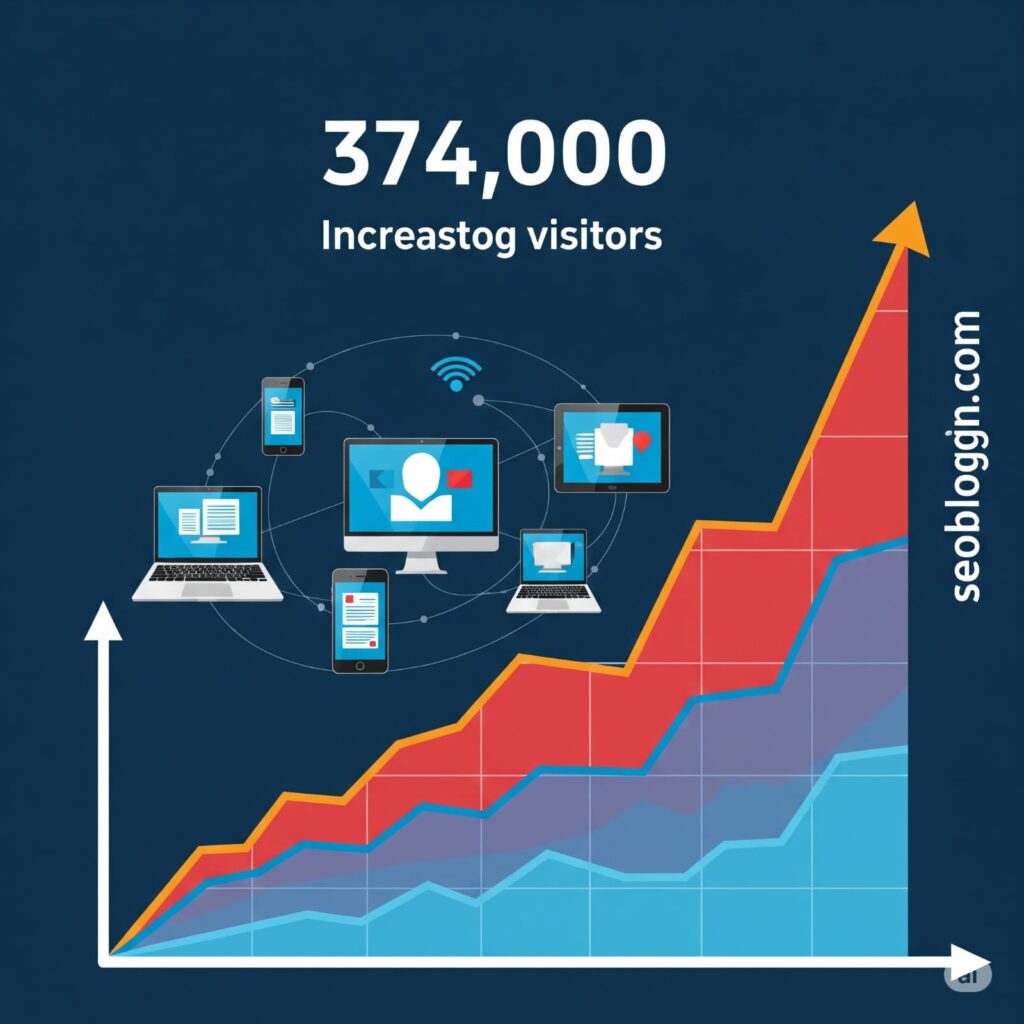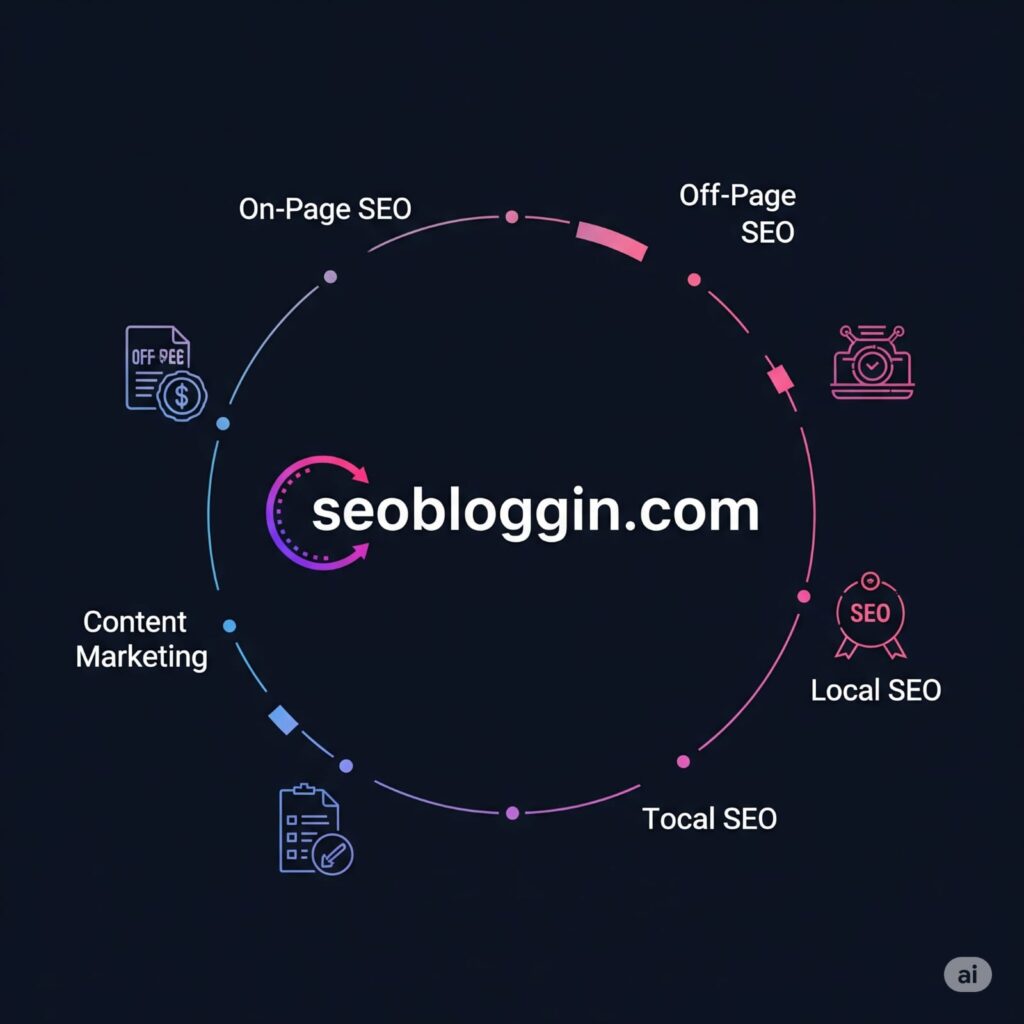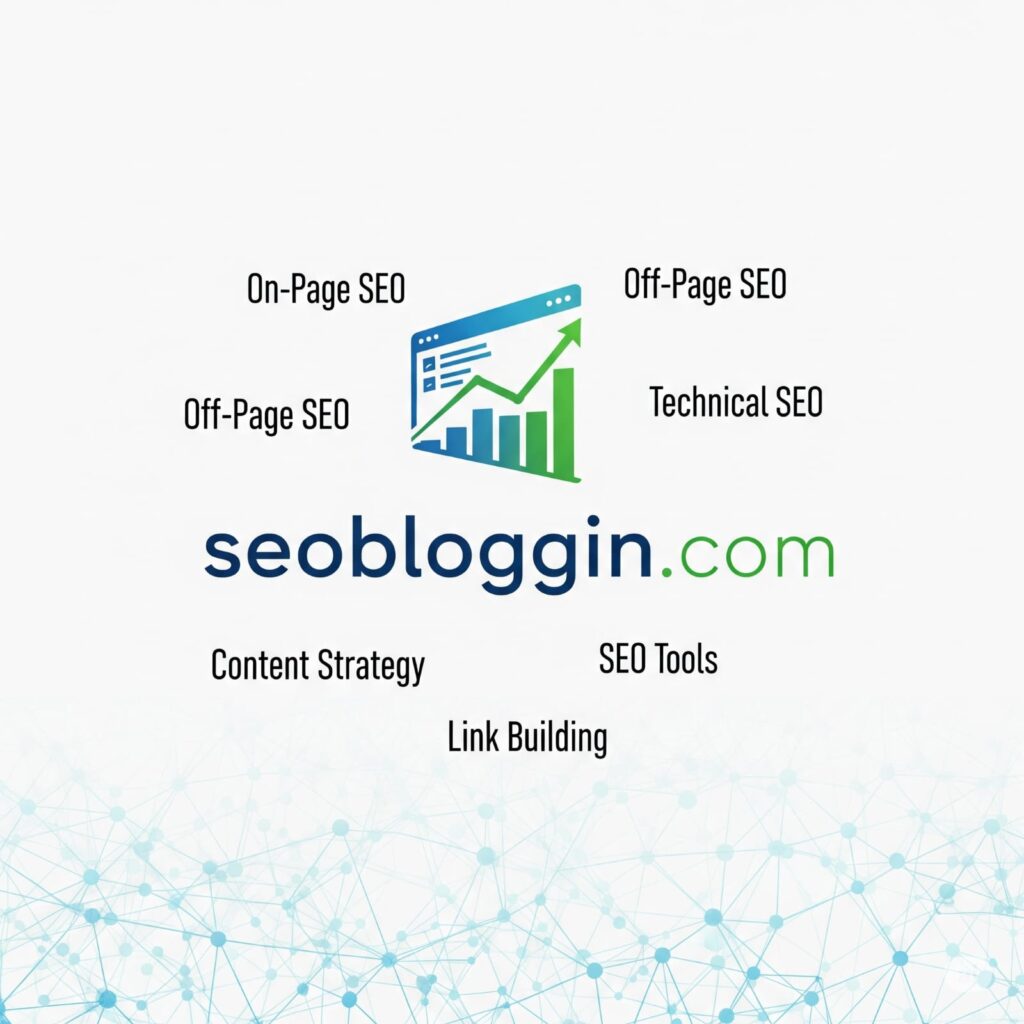Table of Contents
Introduction
A New Era in Search: What’s Changing?
Search engines have evolved beyond simply providing answers — now they respond with human-like understanding. With the launch of Google’s SGE (Search Generative Experience), SEO has stepped into a whole new era in 2025. The classic blue links are slowly disappearing, making way for intelligent, AI-generated results.
Why Bloggers Need to Pay Attention Now
If you’re into blogging for beginners, SEO is no longer just about keyword stuffing or backlink building. It’s about creating content that both people and Google’s AI can understand and trust. Ignore this shift, and your blog may disappear from top search results.

Understanding Google SGE
What is Google SGE (Search Generative Experience)?
Google SGE is an AI-powered feature that transforms the search engine into a smart assistant. Instead of just showing 10 links, it summarizes information directly in the search results, often answering the user’s query without them clicking any link.
How is SGE Different from Traditional Search?
Let’s break it down.
AI-Powered Snapshots
SGE shows summaries of answers at the top of the search page, pulling from various sources. These “snapshots” can sometimes replace the need to visit a blog post altogether.
Conversational Follow-Up
After reading the snapshot, users can ask follow-up questions directly — and Google will generate responses instantly using AI, continuing the conversation.
Source Integration and Summarization
SGE credits original sources, but only partially. If your blog is mentioned, it’s great. But if your content is summarized without being clicked, you miss out on traffic — unless optimized properly.
How SGE is Changing SEO Rules
The Death of Old Ranking Tactics?
Forget the old “rank #1 and win traffic” mantra. In the SGE world, even top-ranking blogs may be skipped if Google’s AI summarizes your content in the snapshot. That’s why optimization now needs a new approach.
What Does “Position #1” Even Mean Now?
Ranking first on Google no longer guarantees the top spot in visibility. What truly counts now is getting featured in the AI-generated snapshot that appears above the search results. To earn that place, your content must be clear, trustworthy, and genuinely valuable in the eyes of Google’s AI.
Google’s AI is the New Middleman
Think of Google’s AI as a filter. If your blog doesn’t pass through it — meaning, if it’s not clear, original, and trustworthy — it won’t get featured in the snapshot, no matter your old-school SEO skills.

Impact of SGE on Blogging in 2025
Blogging for Beginners – Why SGE Could Be a Blessing
If you’re just starting out, this is your golden opportunity. Most big websites are still catching up with SGE. If your blog is:
- Clear
- Authentic
- Focused on solving specific problems
… you can actually outrank the giants by being featured in the snapshots.
SEO Tips for Beginners Under the New System
Here’s what works:
- Use conversational writing — match how people talk and search.
- Answer one specific question per section.
- Present your content using visuals and bullet lists to boost clarity and make information more digestible.
How to Write SEO Friendly Blog Posts for SGE Results
Want to land in SGE snapshots? Structure your post like this:
- Start with a summary answer (like a mini-definition or direct response).
- Add supporting details in bullet points.
- Include an FAQ section.
- Use long-tail keywords like “how to increase blog traffic using SGE” or “SEO tips for beginners 2025”.

Blog SEO Checklist 2025 (SGE-Ready)
Keyword Placement in a World of AI
Keywords still matter — but not like before. Focus on intent-based keywords. Think:
Use them naturally in:
- Titles
- H2/H3 subheadings
- Meta descriptions
- First 100 words
Writing for AI + Humans (Dual Audience)
You’re not just writing for people anymore. Now your audience is:
- To get noticed, your content must pass Google’s AI checks for organization, readability, and trustworthiness.
- Actual readers (who want simplicity and value)
Make both happy by writing clean, structured, easy-to-digest content.
E-E-A-T Signals Are Now Critical
E-E-A-T = Experience, Expertise, Authoritativeness, and Trust. Show Google you’re the real deal:
- Add author bios with credentials
- Link to credible sources
- Share first-hand experiences
- Use original images
Focus on First-Hand Experience and Originality
“Google’s SGE favors fresh, original perspectives. If your blog just repeats what’s already out there, it’s likely to be overlooked. Share personal experiences, real-life examples, or unique case studies to make your content stand out.

How to Increase Blog Traffic in the SGE Era
Don’t Chase Traffic, Attract Attention
Rather than chasing clicks, focus on earning visibility in the AI-powered summary section. To do that, use:
- Strong, clear headers
- Action-based intros
- Rich snippets and FAQs
Use Visuals and Infographics – AI Loves It Too
Google’s AI pulls from:
- Charts
- Tables
- Infographics
Including them improves the likelihood that your content gets highlighted or quoted by Google’s AI.
Mastering Follow-Up Questions in Your Blog Content
Add sections like:
- “What’s next after [topic]?”
- “Is [topic] still worth it in 2025?”
By answering follow-up-style questions, your content may get picked for deeper conversations in SGE.
Tools and Plugins to Stay Ahead in 2025
Use AI Detection Tools
Check if your blog sounds too robotic. Use tools like:
- Originality.ai
- Writer.com AI checker
These ensure your content is human-like and trustworthy.
SEO Plugins that Understand SGE Structure
Use updated plugins:
- Rank Math SEO (with SGE optimizations)
- Yoast SEO (latest AI-focused update)
- Surfer SEO (for real-time readability + structure)
Real-Time Content Analyzers
Use tools like:
- Frase.io
- MarketMuse
- Clearscope
They analyze what SGE includes in its summaries — and help you align with it.
Conclusion
Don’t Fear SGE – Adapt and Win
Google’s SGE is here to stay — and yes, it’s shaking up everything. But here’s the truth: if you adapt, simplify, and write for both AI and humans, your blog can thrive. Whether you’re new to blogging for beginners or a seasoned writer, the future belongs to those who evolve.
Make your blog SGE-ready. Use the Blog SEO Checklist 2025, follow modern SEO tips for beginners, and focus on how to write SEO friendly blog posts that answer real user questions clearly.
























